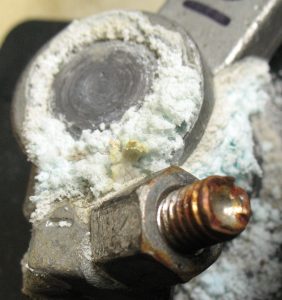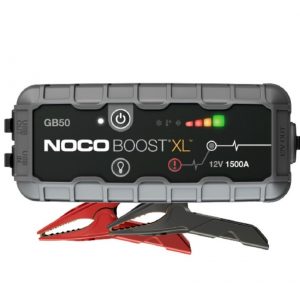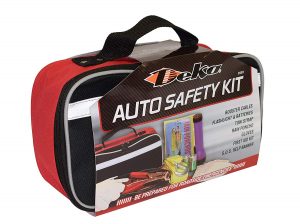Winter is Dead Battery Season: Here Are Some Tips to Prepare for It
It might seem like batteries are somewhat unpredictable, and in some ways, they can be. While the two most common killers of batteries are heat and time, winter cold is often the final straw. Winter and cold temperatures expose underlying battery weakness. Therefore, it doesn’t always take a polar vortex to cause battery problems. Plus, the technology-heavy features we all love in late model vehicles can add to premature battery failure.
But, that doesn’t mean there’s nothing you can do about the health of your battery, as we move into the battery killing season. Here’s a few things you can do to help you get through the winter without a battery failure.
Check for Corrosion
Corrosion on the battery terminals will keep the cables from making contact with the terminals correctly. That might prevent the electricity from flowing and a car from starting. Before you scrub 
 it off, it’s probably worth taking a look at the type of corrosion forming on your terminals. White, powdery corrosion on the negative terminal might be due to sulfation. This means that the battery is undercharged and may have lost a significant amount of capacity. Bluish-green corrosion is generally copper sulfide. This will greatly reduce the flow of energy from the battery to the starter or from the alternator to the battery. Thus, removing it is essential.
it off, it’s probably worth taking a look at the type of corrosion forming on your terminals. White, powdery corrosion on the negative terminal might be due to sulfation. This means that the battery is undercharged and may have lost a significant amount of capacity. Bluish-green corrosion is generally copper sulfide. This will greatly reduce the flow of energy from the battery to the starter or from the alternator to the battery. Thus, removing it is essential.
Cleaning off the terminals is one way to help the battery so it doesn’t have to struggle so much this winter. Terminals can be cleaned with a stiff wire brush and a mixture of baking soda and very hot water. Remember to clean the interior of the terminal connections, not just the exterior surface. Before you remove the terminals, it’s a good idea to connect a memory saver so you can preserve your vehicle’s memory. After you have cleaned the terminals, use a corrosion preventative to help with future corrosion.
Test Battery Health
Giving the battery a quick test is a good idea as the winter weather approaches. Find out if your battery is weak. If it is, it’s likely worth replacing it sooner, rather than later. Because, let’s be honest, it won’t get any stronger as the temperature drops. While you are getting your battery tested, it would also be a good idea to get your starter and alternator checked. Best to know in advance if you have an issue lurking in your electrical system.
Give It a Charge
Even if your battery checks out fine, we strongly recommend seasonal preventive maintenance charging of your battery. There are a few reasons we recommend doing so. First, depending on your driving patterns, it is very possible that your battery is not regularly getting a full charge. This results in it often sitting in a slightly discharged or moderately discharged state. This leads to  sulfation which is very detrimental to your battery’s long term health. Second, it is possible that your vehicle’s charging system is not providing the most beneficial charge possible. Short trips and slower speeds make this situation worse. Finally, winter functions such as heated seats and window defrosters in stop and go traffic put more strain on you battery. A periodic maintenance charge will bring your battery back to full charge. It can restore reserve capacity and help reduce or reverse sulfation buildup.
sulfation which is very detrimental to your battery’s long term health. Second, it is possible that your vehicle’s charging system is not providing the most beneficial charge possible. Short trips and slower speeds make this situation worse. Finally, winter functions such as heated seats and window defrosters in stop and go traffic put more strain on you battery. A periodic maintenance charge will bring your battery back to full charge. It can restore reserve capacity and help reduce or reverse sulfation buildup.
Take It Easy on the Battery
Many of the accessories running in our cars aren’t easy on the system or your battery. With an abundance of power-hungry devices, it’s easy to use more power than we should. This is particularly true of “always on” aftermarket devices. Aftermarket anti-theft systems and driving monitors are 2 examples of this. When these are added, you could be creating parasitic draws that hurt you in 2 ways:
- They increase the likelihood of a dead battery if unused for any length of time
- They bring battery voltage down where sulfation will accelerate
Carry a Jump Starter
Having a self-sufficient method of starting your car is essential during the winter months. Having a jump starter can help you avoid delays. Remember to charge your jump starter per the  manufacturer’s guidelines. We recommend recharging every 90 days, regardless of the type of jump starter you have.
manufacturer’s guidelines. We recommend recharging every 90 days, regardless of the type of jump starter you have.
Check the Vehicle’s Other Critical Systems
Winter cold is hard on all vehicle systems, not just the battery and starting/charging system. To avoid dangerous breakdowns, it is best to check all major systems and perform required preventative maintenance. This includes:
- checking/changing your oil and filter
- flushing your cooling system
- inspecting your tires and brakes
- replacing your wiper blades
Have an Emergency Kit in Your Vehicle
Despite your best preparation, you may still find yourself in an emergency situation. Your emergency kit should include:
- jump starter
- work light
- flares
- gloves
- boots
- blankets
Winter is hard on a vehicle’s battery, but you can keep your battery in good shape and your car starting smoothly. These tips should help you to overcome unforeseen problems, should they arise. Safety and preparation go a long way to being prepared during harsh weather. Many of you can do these things yourself, but why don’t you come in and let the experts advise you. We can do most of these things. From checking your battery and charging systems to charging your battery. Cleaning corrosion off your terminals is free, so no need to worry. We can check your system for parasitic draws. We sell chargers and boosters. And, we have emergency kits. Stop by today and let us prepare you for winter! Remember, at American Battery Corporation, “We Sell Batteries, Knowledge and Service Are Free”.